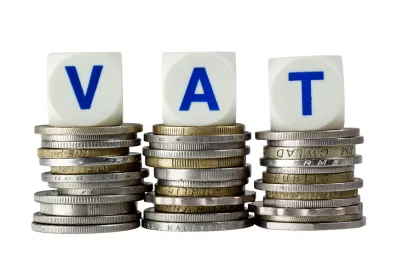On July 1, 2018 the so-called split payment mechanism was introduced into the Polish legal system. Split payment refers to the splitting of invoice payments in B2B relations between a supplier’s current bank account and a VAT account, which is automatically opened by banks as an account directly linked to current accounts. Funds constituting the VAT portion of an invoice payment are transferred to and from such VAT accounts. The split payment mechanism in Poland is not obligatory. Purchasers of goods or services can decide whether they want to split their payments in two parts, with the net amount transferred to the supplier’s current account and the VAT amount credited to the VAT account. The use of the funds on VAT accounts is restricted by law.
The introduction of split payment into Polish law has significant practical implications for financing, especially factoring and all secured transactions where an assignment of rights is used.
VAT Accounts
The new law required the banks to open VAT accounts automatically by June 30, 2018, as a separate account existing in conjunction with the current accounts held by business entities. Opening of a VAT account does not require a separate agreement with the bank. The VAT accounts are free of any additional charge. As a rule, banks shall open one VAT account for a taxpayer, no matter how many current accounts are held by such taxpayer with the bank. VAT accounts may be interest bearing – the statutory provisions leave the decision in this matter to the bank and the account holder. Of special importance to international business, the VAT accounts are accounts in Polish currency (PLN) and may be opened only in connection with a current account in Polish currency. This means that the split payment mechanism will only apply to transactions in Polish currency.
Restricted Use of Funds
The funds deposited in VAT accounts may be used by the account holder only for the specific purposes expressly listed in the new law. These purposes generally refer to VAT operations – a business entity can use funds on its VAT account to pay VAT to its suppliers’ VAT accounts (thus splitting a payment to a supplier into a VAT payment and a payment of the net amount to the supplier’s current account), or to pay VAT to the tax authority. The most important restriction for business entities is the fact that current account holders may transfer funds from such VAT accounts to current accounts only with consent granted by the tax authority.
To Use or Not to Use Split Payment?
At least for the time being, the use of the split payment mechanism is not obligatory. The legislator left it for purchasers to decide each time they pay an invoice whether to use the split payment mechanism. Theoretically, suppliers do not have control over the use of such mechanism. In practice, suppliers can try to limit the use of the split payment mechanism in their contracts or general terms, by prohibiting such payment method or by giving special incentives for purchasers (in the form of discounts or other) not to use such method. While a general contractual prohibition of the use of the split payment mechanism may raise doubts as to its validity as a circumvention of law, the Polish Ministry of Finance in its non-binding declarations admits that contractual provisions offering special bonuses to purchasers for not using the split payment mechanism are permissible within the boundaries of freedom of contracts.
However, the introduction of the split payment mechanism has to be seen in the more general context of the battle against VAT tax evasion started by the Polish government. The new law gives certain benefits for suppliers and purchasers for the use of the split payment mechanism. Nevertheless, the most important advantage is that the new mechanism protects a purchaser of goods or services against the negative consequences of getting entangled (without being even aware of it) in VAT criminal activities by dishonest firms or individuals. Thus, the intention of the Polish legislator is to put the supplier under pressure –meaning that any limitations on the acceptance of split payment should raise the customer’s mistrust as to the grounds of such actions (there are consequences for the customer if its supplier fails to account for VAT properly with the tax authority).
Once large business entities start using the split payment mechanism, others might be forced to do the same in order to properly manage their liquidity and make use of the funds they receive to their VAT accounts. Thus, the Polish Ministry of Finance expects that the split payment mechanism, although not obligatory, soon will cause a snowball effect.
No Pledge on VAT Accounts
From the perspective of secured transactions, it is important that VAT accounts cannot be encumbered by means of an in rem right. Thus, secured creditors will not be able to take security over VAT accounts in the form of commonly used financial or registered pledges over accounts. This means that VAT accounts will be added to the list of accounts that may not serve to secure lending transactions. Until now, examples of such accounts were Employee Social Benefit Fund accounts.
Joint and Several Liability of Certain Factors and Financiers Receiving Payments
Under certain circumstances, factors and financiers receiving payments can face joint and several liability for the VAT payable by their customers. If the factor or financier has a PLN current account in Poland – which automatically means that it has a VAT account – and it factors or finances a customer and then receives direct payment of an invoice issued by the customer on the split payment basis, so that the VAT portion of the invoice is credited to the VAT account of the factor or financier — such payment will result in the joint and several liability of the factor or financier in favor of which the payment has been made, together with the supplier issuing the invoice. The factor or financier is liable with respect to the VAT amount unsettled by such supplier. The taxpayer who is not named in the invoice but who received the payment is liable for VAT up to the VAT amount received by such taxpayer.
To release itself from such liability, such factor or financier who received a payment to its VAT account has to, once it has knowledge about receiving such payment, transfer the VAT amount received without any delay to the VAT account of either the supplier named on such invoice or the purchaser from whom it received such payment.
Factoring
Thus, joint and several liability for VAT causes a potential risk for factors. In a model factoring transaction, a client/factoree assigns its receivables to a factor who in turn makes an advance payment to the client/factoree in the amount equal to a percentage of an underlying invoice (advance rate). Debtors pay the assigned receivables directly to the factor, who after deducting its fees and commissions, pays the remainder amount to the client/factoree. To avoid potential joint and several liability for unsettled VAT, factors will have to transfer back the amounts of VAT received in its VAT account either to the debtor or to the client /factoree. The problem is that at the time the factor pays the advance payment it does not know whether the debtor will use the split payment mechanism; thus any potential solutions have to account for both possibilities. However, as business entities use factoring to increase their liquidity, factors to remain competitive need to choose solutions that affect their clients’ liquidity to the smallest degree possible.
One option is to pay out the advance payment to the client/factoree by using the split payment mechanism and paying the whole amount of the VAT to the client’s/factoree’s VAT account. However, applying a literal interpretation of the split payment provisions there might be doubts whether the factor is entitled to use the split payment, as the factor is not paying the amount due under such invoice but making an advance payment towards the purchase price for such receivables. Another option is to pay the whole advance payment to the current account of the client and, where the debtor uses split payment method, the factor would transfer the amount received in its VAT account to the VAT account of the client/factoree. Factors should generally be more interested in transferring such amounts to their clients to increase their liquidity rather than transferring such amounts back to the debtors. The latter option might affect the advance rate (using a 90% advance rate could cause that the factor has to pay to the client/factoree more than 100% of the gross amount on the invoice). In addition, factors might set-off their claims with the advance payments for other invoices.
Assignment of Rights
Similar risks arise in the case of financings secured by an assignment of rights. If following an event of default, a secured creditor receives a payment from a debtor for the assigned contract in the split payment method, to release itself from the potential joint and several liability for unsettled VAT, the secured creditor should transfer the amount received to its VAT account either to the debtor or to the assignor. Thus, the assignment agreement should expressly reserve a right for the assignee to make such transfers and provide that in such case the secured claim is decreased only by the net amount received from the debtor.
Joint and several liability for factors or financiers/assignees will not arise if the split payment is not used, that is, if the debtor pays the entire invoice to the current account of the factor or financier, rather than splitting the payment. This also protects factors or financiers/assignees financing in currencies other than PLN (or more precisely who take security over receivables or finance only against invoices in currencies other than PLN) or who operate outside of Poland and have no PLN accounts, as payments in such cases would not be made using the split payment method. However, the factor or financier/assignee will still need to analyze and monitor closely the liquidity situation of its customer under the new split payment rules.





 />i
/>i
